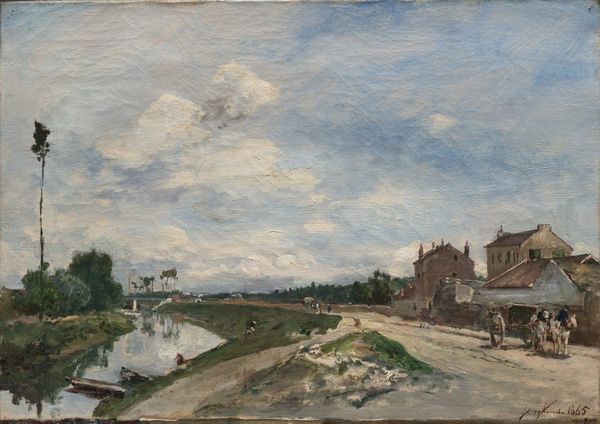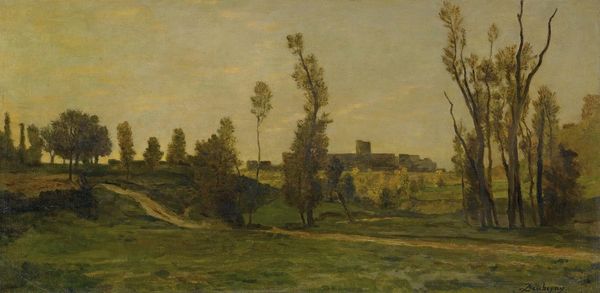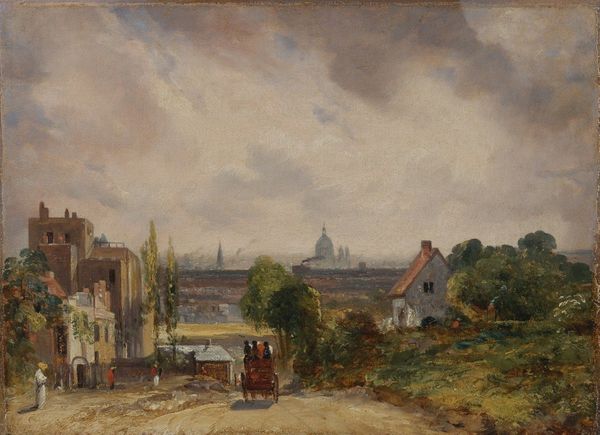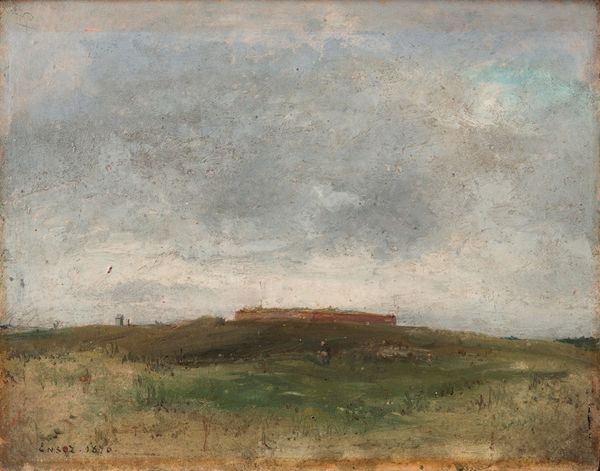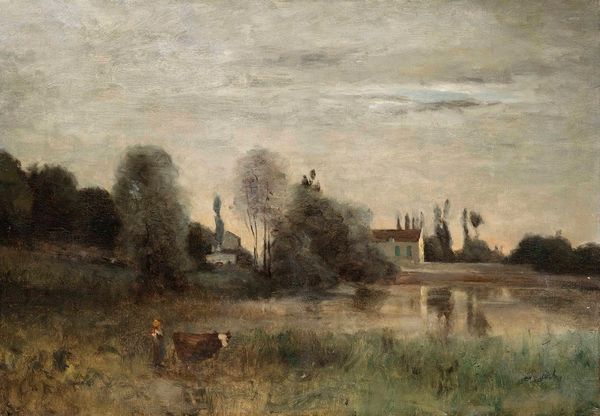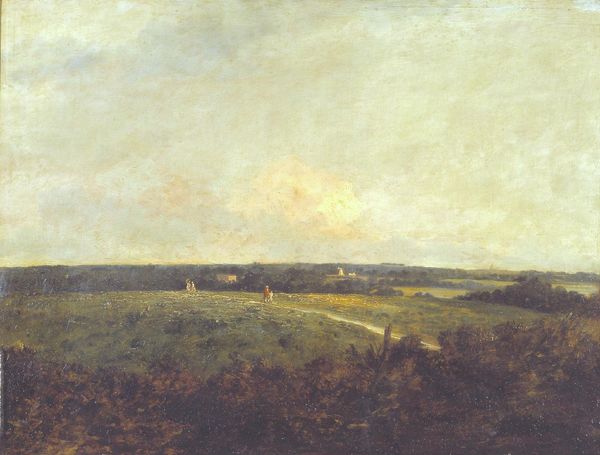
Copyright: Public Domain: Artvee
Camille Corot likely painted ‘The Ramparts of Arras’ in France sometime in the mid-19th century. At first glance, it presents a simple landscape, but it also reflects the changing social landscape of France during that time. Corot, who trained in the classical tradition, brings a certain social conservatism to his work. Yet he departs from academic painting. The muted tones, the subtle light, and the focus on the everyday reflect the growing influence of Realism. Here, the artist finds beauty not in grand historical narratives, but in the mundane realities of provincial life. The architecture in the background and the ramparts in the foreground, show France moving into a modern era while also remembering its past. Understanding this work requires us to consider the political climate of 19th-century France. Through archival research and social histories, we can discover the complex social context that shaped not only Corot’s artistic choices but also the reception of his art by critics and the public alike.
Comments
No comments
Be the first to comment and join the conversation on the ultimate creative platform.
